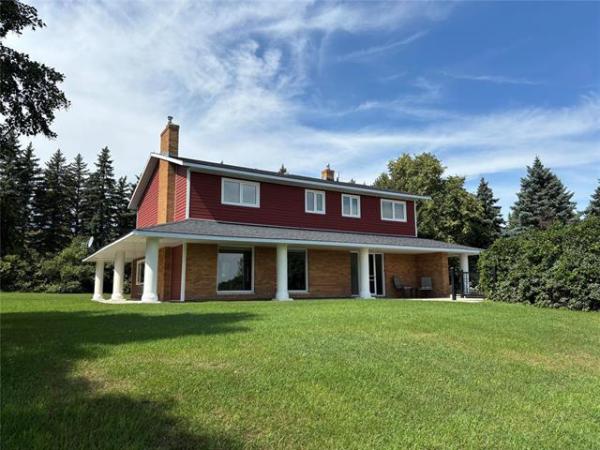Each year in southern Manitoba I have observed growing numbers of Lecanium scale insects feeding heavily on the twigs of ash and occasionally elm and linden trees, causing their twigs and branches to die. Sometimes the infestation is so severe that the tree can die.
In addition, trees, especially ash trees, have always had fluctuating infection levels of leaf fungal disease either with or without high levels of scale infestation. This disease is usually not a problem as it causes either brown blotches in the leaves or causes the leaf stalk and leaves to prematurely separate from the twig.
In recent years, I've noticed anthracnose killing the leaves of Manchurian ashes. I now see a twig anthracnose disease component especially in Mancana ash trees that have had repeated anthracnose leaf infections. The disease appears as a linear swelling in the twig with the twig bark splitting into fine parallel cracks, called lesions. As the disease intensifies in the twig, these lesions open up and become spore producing cankers. The spores will travel through the air and infect other ashes including the originating ash tree.
As anthracnose canker disease, in my experience, has been a problem in warmer areas of North America -- especially in the U.S. -- could this be a sign that our Manitoba climate is changing to favour the growth of this disease? Lecanium scales have always fed on the twigs of a variety of trees. Lately, they have become a serious pest issue with trees such as Manitoba maple, silver maple, American and Siberian elms, lindens, choke cherries and all fruit trees. It remains to be seen if future years bring along higher infestation levels of these scales. The same speculation could be made about the disease intensity of ash anthracnose.
The best means of controlling the scales is to spray the entire tree with dormant oil. This will smother over wintering eggs. The best means for controlling leaf anthracnose is to spray dormant lime sulfur fungicide. Both sprayings should be carried out in mid-April before the buds open in the spring. The buds, twigs and branches should be thoroughly soaked with dormant products. The lime sulfur can be mixed with dormant oil (if scale and mite control are needed) and sprayed on the tree together. Spraying a fungicide such as copper sulfate or another approved fungicide in early June may help control the early stages of the twig disease.
In the short term, the changes in diseases and insects affecting ash trees in Manitoba may be attributed to natural random variations in the levels of these problems. In other words, some years are worse than others. It is premature to speculate that these changes locally are related to changes happening globally with climate.
Those of us working in tree care should always be on the lookout for patterns of change relating to the health of trees. There has been much discussion about the potential invasion of the emerald ash borer into Manitoba ash trees. There is an invasion preparation alert in place. As our urban and rural ash trees become more stressed through diseases and insect infestations, they become prime targets for the feeding activities of these voracious borers. This is an alarming situation to think about, especially when at least 30 per cent of our trees are ash species.
Michael Allen M.Sc.F., RPF (ret.) is a consulting urban forester, tree diagnostician and certified arborist. He owns Viburnum Tree Experts, a Manitoba company that provides objective assessments of the condition and the care required for trees and shrubs. He is available to visit homes and gardens. He can be reached at 204-831-6503 or 204-223-7709 viburnumtrees@shaw.ca His web site is www.treeexperts.mb.ca
Michael's new book: 'Dr Tree's Guide to the Common Diseases of Urban Prairie Trees' is available from the author or from McNally Robinson book store.



